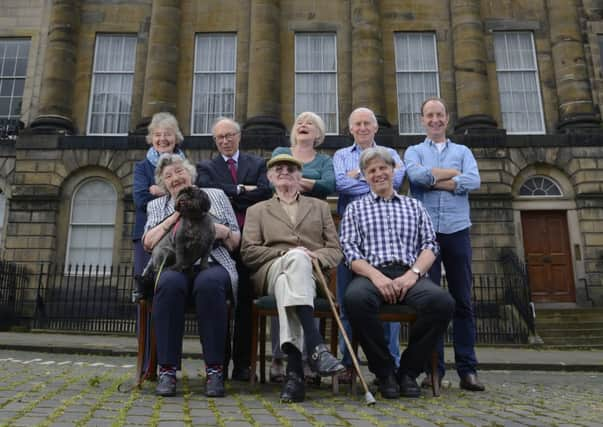BBC series shows secret history of Scots streets


Edinburgh’s Moray Place, Duke Street in Glasgow and the village of Footdee in Aberdeen were investigated by film-maker Joseph Bullman in series two of the Secret History of Our Streets, which was nominated for 12 awards including a Bafta after it was shown two years ago.
The first series featured six archetypal London streets, from the first council estate in Britain to Notting Hill’s Portland Road.
Advertisement
Hide AdMoray Place, in the heart of the capital’s New Town, has been hailed by the filmmaker as the “last bastion of the British Empire” due to its upper middle class population – many of whom are descendents of the original occupiers of the street, which was built in 1825.
In the first programme, to be shown on BBC Two on 25 July, Mr Bullman spoke to a range of residents from the great-grandson of the Earl of Moray, who created the street on his land in the early 19th century, to incomer Ian Gray, who grew up in a two-room tenement and made his fortune in private equity before snapping up one of the few five-storey townhouses on the street which have not been turned into flats.
The street’s fortunes have ranged from being an upper-class family area to being taken over by businesses, including three private hospitals, during the early 20th century.
“When we decided to make a second series in Scotland, we didn’t know whether we would find the wealth of history that we had discovered in London,” said Mr Bullman. “But we did.
“However, while in some areas of London, when we looked at the history of certain streets, we saw a constant stream of migration. In Scotland, it was very different. Some people’s families had lived in the same street for generations.”
The team put letters through doors in targeted areas of Scotland’s three biggest cities and waited for residents to contact them before deciding who to feature in the documentaries.
Advertisement
Hide Ad“I went to Edinburgh’s New Town, where I discovered a street unlike anything you could ever find in England,” said Mr Bullman. “The last bastion of the British Empire – with an architecture and a people seemingly unchanged over 200 years.”
John, the 21st Earl of Moray, is currently trying to follow in his ancestor’s footsteps by building the controversial Tornagrain new town in the Highlands.
Advertisement
Hide AdResident Patrick Simpson, 92, who lived on Moray Place for much of his life and recalled the team of servants who lived in his family’s home until the war, is featured in the documentary. Another local is David Hope, Lord Hope of Craighead, whose family has lived in Moray Place since it was built and who holds the same position as head of the Scottish judiciary system – Lord President of the Court of Session – as his ancestor Charles Hope, who also lived in Moray Place more than 200 years earlier.
The episode featuring Duke Street in Glasgow will look at its history as Britain’s longest street, and the subject of a campaign by local residents to stop it being demolished by the local council.
Footdee, which is the topic of the third episode, was a planned housing development purpose-built in 1809 to rehouse Aberdeen’s local fishing community.